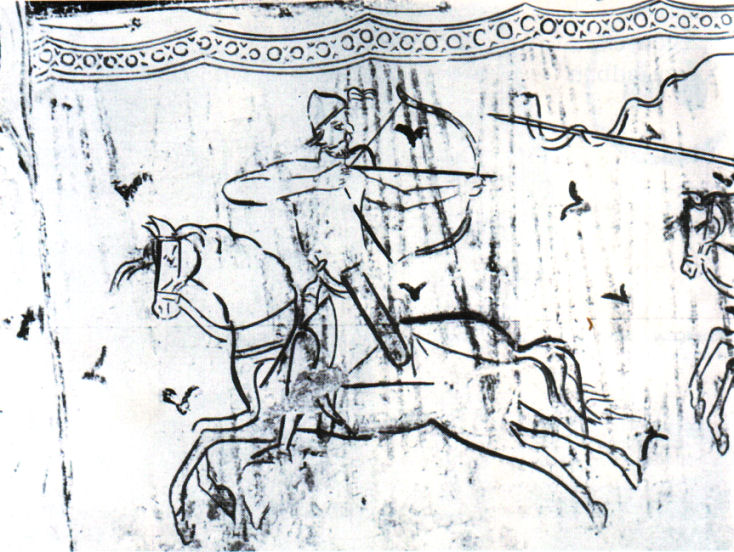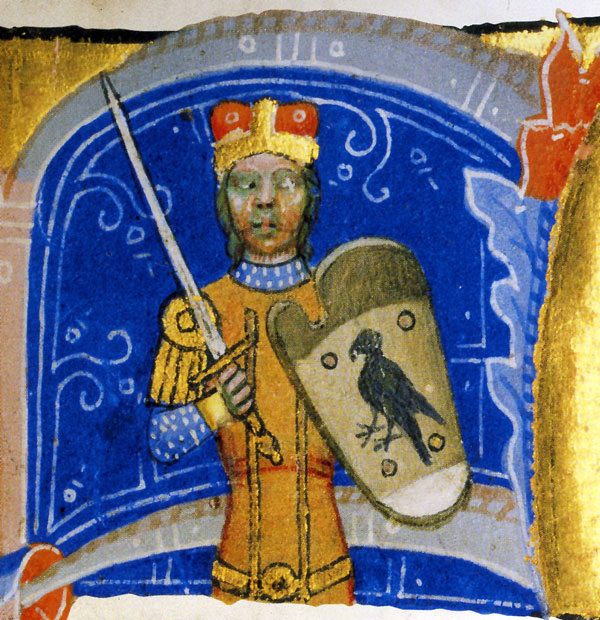
Hungarians moved westward at the request of the powerful sovereigns, who were in opposition to King Otto I.Continue reading

The Rise of the Árpáds (Árpádok felemelkedése) is a stopgap product depicting the rise of the Árpád dynasty in the ninth century. It has been made over more than three years with the help of numerous experts, and will be shown on public television channel Duna TV on the national holiday, 20 August at 3 p.m., reports Magyar Nemzet.
The film is a comprehensive history of the 9th and 10th centuries, a period that has never been depicted in a movie before. The Rise of the Árpáds comes with illustrated scenes and an educational approach. In addition to the well-known tales, the film presents the early history of the Hungarians and the unique story of the rise of the Árpád clan, which would dominate the centuries to come.

Image depicting Árpád. Photo: Wikimedia Commons
Thanks to House of Árpád’s unparalleled knowledge of state organization, the Hungarian state was born in Etelköz and, despite all the difficulties, they were able to successfully transfer it to the new homeland though it was not only the Carpathian Basin that was the primary target of the seven leaders. The documentary follows the footsteps of Álmos (the first Grand Prince of the Hungarians) and Árpád (Hungarian Grand Prince, head of the Hungarian tribal federation during the conquest of the Carpathian Basin) to explore the world of their ancestors, their traditions and how the Hungarian people reached the Carpathian Basin.
In fact, the decisions of the Árpáds – joining the Western world and embracing Christianity – are still decisive for the Hungarian people today.
Both the first Grand Prince of the Hungarians (Álmos) and the first king of Hungary (Saint Stephen) were members of the dynasty. Christianity was adopted as the state religion for the Kingdom of Hungary by the dynasty, and the Árpád’s kings used the title of the apostolic king. The descendants of the dynasty gave the world the highest number of saints and blesseds from one family. The Árpád dynasty ruled the Carpathian Basin for four hundred years, influencing almost all of Europe through its extensive dynastic connections. Eight members of the dynasty were canonized or beatified by the Catholic Church; therefore, since the 13th century the dynasty has often been referred to as the “Kindred of the Holy Kings”. The dynasty came to end in 1301 with the death of King Andrew III of Hungary, while the last member of the House of Árpád, Andrew’s daughter, Blessed Elizabeth of Töss, died in 1336 or 1338.
What is more, the filmmakers shot with never-before-seen national treasures. Sándor Takó, the film’s creator and producer, said that they were proud that renowned experts, traditionalists and professional institutions had backed the film.
We were able to shoot with national treasures that had never been seen on film before, such as Anonymus’ Gesta Hungaroruma or Márk Kálti’s Pictorial Chronicle. Hungarian history literally came to life in front of our cameras: we were the first crew to be able to shoot super-close-ups of these 700-800 year-old chronicles.
We hope that, like our previous works, this film can be integrated into Hungarian education,” he noted.
Krisztián Bárány, the film’s writer-director, said that under the professional guidance of historian Balázs Sudár, they had worked to present this important topic for the nation in a comprehensive way, with illustrative scenes. “The excellent traditionalists of the period, led by Balázs Tompa, János Mestellér and Attila Kiss, contributed to the accurate depiction. This is also how we were able to portray Leader Árpád, played by actor Balázs Csórics,” he recalled.
The creators considered it important to reconstruct and present the nomadic lifestyle of the horse-riding nomads, so the illustrative scenes were created in cooperation with the prominent traditional associations of the period.
Featured photo via Wikimedia Commons (painting of Mihály Munkácsy)